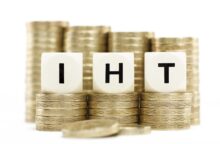
Pension freedoms were introduced in 2015 and apply to anyone who has a defined contribution (DC) workplace pension. The freedoms allow you to flexibly access the money saved in your DC pension plan.
You can usually choose to take 25% of your pension pot as a tax-free lump sum. You can then make withdrawals from the balance as you need it (pension drawdown) or buy a secure income (an annuity). These will be subject to income tax.
Drawdown trends
Interactive Investor examined drawdown trends among its SIPP customer base. It found that among its customers who moved all or part of their SIPP into drawdown between April 2019 (when comparative records began) and the end of March 2025, 49% chose to take the maximum tax-free lump sum of 25% of their entire SIPP.
Meanwhile, 29% withdrew less than 10% of their pension pot tax-free, and 22% took out between 10% and 24%.
These figures are slightly higher for customers who were age 55, which represents 11% of the broader cohort: 59% withdrew the full 25% and 21% took between 10% and 24%, while 20% took less than 10%.

Why Life Insurance Still Matters – Even During a Cost-of-Living Crisis
Sponsored by Post Office
Interactive Investor found that not only are the platform’s customers taking tax-free lump sums and regular pension income earlier than before, but the trend is accelerating.
Before the pandemic, between 2018 and 2019, the average age at which Interactive Investor SIPP customers took their first tax-free lump sum was 62. By comparison, this had fallen to 61 between the start of 2023 and the end of 2024.
Similarly, the average age for taking a regular pension income has declined – from 66 in 2018/19 to 63 between 2023 and the end of 2024.
How is the money being used?
Interactive Investor’s Great British Retirement Survey 2023 surveyed 9,000 pension savers to find out how withdrawn funds are being used.
It found the largest proportion (39%) placed the money in a bank or savings account. One in five (19%) invested in a cash ISA, and 11% bought Premium Bonds.
One in four (25%) used some or all of the money to repay debts and/or a mortgage. Just over one in 10 (12%) used the cash for day-to-day living expenses and the same proportion (12%) provided financial assistance to their children.
Regarding confidence in their pension savings, 55% felt confident their pension would last and 32% were somewhat confident – but 13% were not confident.
Pension planning
Myron Jobson, senior personal finance analyst at Interactive Investor, said: “Taking a tax-free lump sum or a regular income from your pension is a major financial decision that must be carefully considered. Once withdrawn, the money loses its protection from capital gains tax, dividend tax, and inheritance tax (until April 2027), which could result in a larger tax bill down the line.
“It’s also important to remember that many current retirees still benefit from defined benefit (DB) pensions, which provide a guaranteed income for life. However, these schemes have largely disappeared due to the high costs for employers, meaning future retirees will need to be even more mindful of their pension drawdown strategies.
“With greater freedom comes greater personal responsibility. Without careful planning, there is a real risk of exhausting pension savings too soon, leaving retirees financially vulnerable in later life. The challenge is ensuring that funds not only support a comfortable retirement but also cover unexpected expenses, including potential long-term care costs. Striking a balance between enjoying pension savings today and safeguarding financial security for the future is crucial.”



